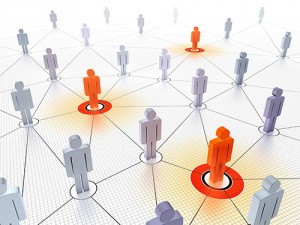 In the AIM Program’s Information Systems and Management course, we talk about leadership and management. Are they the same thing? Can someone be a good leader but a terrible manager, or vice versa? These are good questions. I have been studying how leadership has changed in the last 100 years as we shifted from leaders who oversee one or more factories in a region to leaders who command large global enterprises. In the past, a manager could walk down to the factory floor and talk with each employee, but modern telecommunications have allowed us to create large businesses and to manage those businesses from a distance. What original principles of leadership remain the same and which have changed?
In the AIM Program’s Information Systems and Management course, we talk about leadership and management. Are they the same thing? Can someone be a good leader but a terrible manager, or vice versa? These are good questions. I have been studying how leadership has changed in the last 100 years as we shifted from leaders who oversee one or more factories in a region to leaders who command large global enterprises. In the past, a manager could walk down to the factory floor and talk with each employee, but modern telecommunications have allowed us to create large businesses and to manage those businesses from a distance. What original principles of leadership remain the same and which have changed?
The Personal Touch
I have read autobiographies of Sam Walton of Wal-Mart, Harland Sanders, also known as Colonel Sanders, and Dave Packard of Hewlett-Packard. As they recount the early days of their businesses they all talk about knowing and interacting with the employees. Part of their leadership style was personal contact, which allowed adjustments to the business model based on employee feedback. According to the Wal-Mart website, the company now employs 2.2 million associates worldwide. How does a leader manage so many people in a geographically dispersed firm?
Networking
One of the answers is focused networking through the use of technology. Even though large organizations still use traditional organizational charts, it takes a long time for a complaint to make it through 10–12 layers of management to be heard and acted upon. This is the explicit organization as depicted on the chart. In reality, there is often a parallel, implicit organization that everyone knows about but which is seldom put into writing or a visual. There are touchstones in the organization who “know the right people” and can bypass the traditional structure to get things done. Author Malcolm Gladwell refers to these people as “connectors.” Employees quickly identify touchstones and rally their support in championing new ideas or settling a grievance. Think about how long it takes to disseminate information in your organization and how long it takes to make a low-level decision that for some reason requires multiple signatures. Could you employ this implicit structure for sharing information or collecting feedback quicker?
Leadership in The 21st Century
I believe it is important to recognize this alternate organization and utilize it for disseminating information. We can always do a one-to-many announcement but it is not always effective, nor is it well-received. Touchstones are likely to relay messages quicker. Marrying this network approach with social media channels allows us to still be effective leaders even though we are now steering an ocean liner instead of a bicycle. Such methods are not meant to subvert the traditional organizational structure but to provide a quicker and more effective means of communication through modern technology and networking. Those leaders recognize that it is not enough to have a large number of connections but they also need to be linked to the right people to institute change and move the organization forward.
Thoughts
Do you know the connectors in your organization? Are they in your network? Are you someone others turn to? It is important for leaders to make use of the implicit network just as we work the traditional structure. It is getting harder to effectively lead thousands, if not millions of employees and we need all the advantages we can get. Let me know your thoughts.
Kelly Brown is an IT professional and assistant professor of practice for the UO Applied Information Management Master’s Degree Program. He writes about IT and business topics that keep him up at night.




 Cloud computing has been a buzz-word for a number of years now. Perhaps because it is such a nebulous/ethereal term (cloud?) that has been used to describe a number of different configurations and scenarios. You are most likely using some sort of cloud computing already but it is worth asking the hard questions to make sure you have the basics covered.
Cloud computing has been a buzz-word for a number of years now. Perhaps because it is such a nebulous/ethereal term (cloud?) that has been used to describe a number of different configurations and scenarios. You are most likely using some sort of cloud computing already but it is worth asking the hard questions to make sure you have the basics covered.